The largest genealogical tree
2005/06/09 Galarraga Aiestaran, Ana - Elhuyar Zientzia
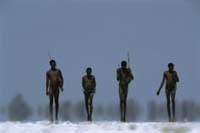
The first modern man arises in Africa. (Photo: Genographic)
The Genographic project is powered by IBM and National Genographic. It will last five years and will employ 40 million dollars. The collection of samples will be carried out in ten laboratories distributed throughout the world and in which all people who wish can participate.
Analyzing the fossils, scientists have discovered that the current man, Homo sapiens, was born in Africa. But the analysis of fossils is not enough to know what has been the road traveled 60,000 years ago since its departure from Africa. Hence their interest in the study of genes, which they hope to complete with them the migratory map of the species.
Own tree
Perhaps the most attractive part of the project is that anyone can participate. With desire and a hundred dollars you can get everything you need to send the sample to Genographic. They promise to help each participant know their ancestors and that, in addition to giving the study results, the data will be anonymous.

Before, of course, you have to give it the sample. The kit purchased in exchange for a hundred dollars contains the material necessary for the collection of the sample. On the one hand, there is a stick with cotton on one end. With this, the area of the cheeks is rubbed inside the mouth. In this way the necessary cells are collected. Then she carefully gets into the sterile tube in the kit and is finally sent to a Genographic laboratory. To have no doubts, in a video they explain how to do it.
Six weeks later, thanks to a code that allows entry, on the Genographic website you can see how the sequencing of your DNA is performed. In turn, they offer a lot of resources to explain how each step is made.
When the result is ready, one of the researchers delivers it to the participant. Not only that: it tells you who are the older relatives and gives you a map of the way those relatives did. The more samples are collected, the more possibilities are to compare data and to clarify the human journey in time and geography.
The key is in the genes
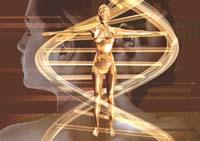
Samples have already been collected and collected. That is the first job. The second step is to extract the information stored by intra-buccal cells. Keep in mind that these cells are not different from others. They are taken for their ease of access. Otherwise, they could be from anywhere else. Both blood and hair.
All cells store all the information necessary for the reproduction and performance of their functions. The information is encoded in the DNA and the DNA is collected on the chromosomes. Genes are parts of DNA that contain fundamental information. Each gene commands exactly how, when, and where to produce a protein. Well, the gene that determines the color of the hair is not only present in the hair cells, but also in the cells of the heart or bones.
In total we have between 30 and 40 thousand genes, of which very few differentiate us from the rest of species. All genes are found in the nucleus of the cell, but there is also a little DNA. This DNA is found in the mitochondria, producing cell energy. However, this DNA does not participate in reproduction.
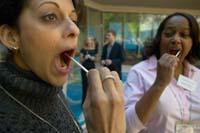
The genes present in chromosomes are essential in reproduction. They are deposit of inheritance. Humans have 23 pairs of chromosomes, and one of them determines sex: women have XX and XY men. In all the pairs, one of the chromosomes has been collected from his mother and the other from his father.
However, the genes of the parents do not reach the offspring as they are. Previously they gather and exchange some information, so the next generation receives them in a combined way. But the male Y chromosome hardly varies, since it is only received by the father. Nor does it change the DNA of mitochondria, which is received from the mother.
Besides exchange there is another way to stop the changes: the mutations. Mutations are random, but researchers can calculate how often they occur. Thanks to this, by going back in the search for the DNA of the ancestors, they can put balls in the way.
From the DNA of one and compared to the other, they know how many changes distance and when they occurred. In this way, it is expected that little by little the map will be completed. A project as wide as attractive. Yes, at least if IBM and National Geographic are behind that doesn't generate reluctance.
Questions that are wanted to answer
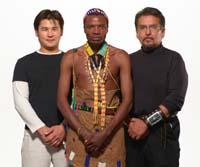
Where did we come from? That is the main question. It is believed that modern man was born in Africa and dispersed everywhere. It is clear that it managed to replace other homos already existing and much has been investigated about the great paleolithic migrations. There are still many unanswered questions. With this project they want to find their answer:
- Was there confusion in Europe, in the Upper Paleolithic, between Neanderthal man and modern man?What is the origin of the Indo-Europeans and what languages were spoken before their expansion? Where did the Celts spread in the first millennium?When did the Arctic colonize for the first time?What was the first human group in the Caucasus and why is there so much linguistic wealth in Africa?What were the genetic remains left by the army of Alexander the Great?What influence did the Silk Road influence the spread of genetic lines? What influence has Chinese geography had on genetics?What was the original population in Indonesia?What genetic difference was there between Homo erectus and Homo sapiens in South Asia and Australia? What genetic differences occurred in migratory migrations? Were the populations very separate from each other?Are there genetic remains of missing populations in mixed populations, such as the Caribbean or the arawas in the Indians?
There are other questions like: Will it be possible to obtain DNA samples from Homo erectus and other missing hominids? And another: if we all have the same ancestor, how does the diversity of the human phenotype arise?
The maternal footprint in the DNA of mitochondriaGenes are found in the nucleus of the cell, but there is also some DNA outside the nucleus, in the mitochondria. Mitochondria are important organelles within the cell, but the sperm do not have mitochondria, so the genetic information contained in the mitochondria is completely maternal. In addition, in part of the mitochondrial DNA the mutations are very frequent, which facilitates the follow-up of the mutations. On the other hand, the DNA of mitochondria is short, so it allows a very fast study. |
We follow the male footprintThey look at chromosome Y to follow the parental inheritance. Women do not have Y chromosomes, so the genetic information of a man on this chromosome is always received from his father. If there were any changes, it would be due to a random mutation. |
The concern of indigenous peoples
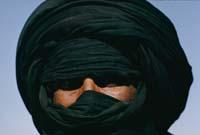
The researchers have special interest in isolated populations and ethnicities that have remained unmistakable. This aspect of research is the one that has provoked the most suspicious. And it is that indigenous peoples will have no control over the samples and fear that they use them for their benefit. For example, they do not want the pharmaceutical industry to use this information and patent DNA sequences.
However, the Genographic boosters ensure that this does not happen. They say they will not patent anything or conduct medical research. Furthermore, they have promised to allocate money and help to preserve and promote their culture. In addition, they will not be limited to collecting samples, but will also collect popular legends. In the oral tradition, the origin and origin of the peoples are explained and it is a question of comparing what was said by the legends with the conclusions obtained from the analysis of DNA.
Undoubtedly, it will be nice to see to what extent the remains stored in the genes coincide with the words transmitted orally. But that is not the trick to acquire the genetic heritage of these groups.
Published in section D2 of Deia.




